You can never get a second chance to make a first impression. tilr's onboarding should be focused on helping users empower themselves.
Impact and Results
Working on tilr's mobile onboarding, I was able to learn the huge benefits of the use constant prototyping (and iterations). Through the prototyping process, we were able to quickly iterate on many different onboarding paths, comparing + contrasting the benefits of each one. The ability of a prototype to be accessible to anyone made it especially easy to show to many stakeholders during the iteration process.
The Problem
Currently, only 15% of users that sign up are being converted into users that can be pushed jobs on the tilr platform. The rest have uncompleted profiles, which if not acted upon, will never be able to receive jobs. Additionally, a lot of the process is also conducted with a phone call, presenting an efficiency and scale issue as well.
Outcome
I had the opportunity to create a revised onboarding feature, guiding newly signed up users about the platform and towards creating profiles that will give them success. Additionally, it's aimed to reduce reliance on phone calls to obtain information.
Role
Product Designer
Tools
Sketch, Figma, Zeplin, Overflow
Team
One engineer, one project manager, two product owners, one designer (me)
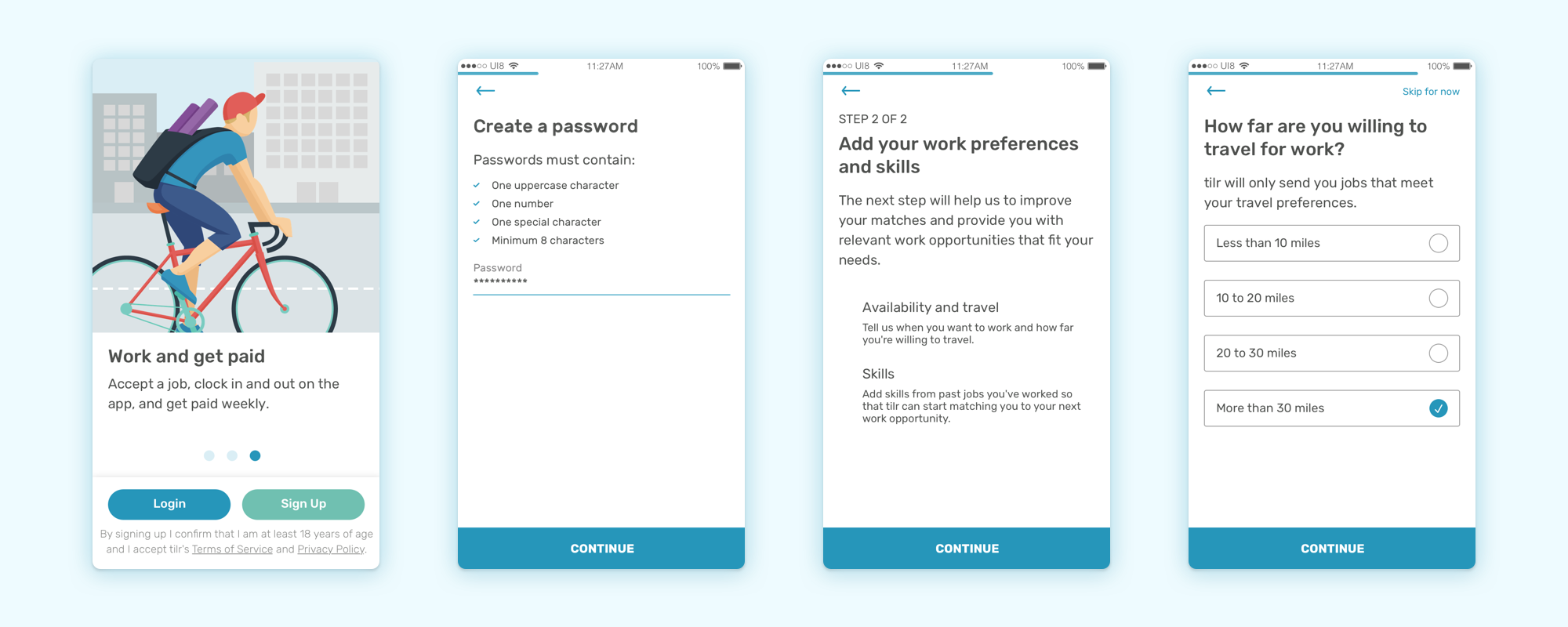
Research and Analysing
We began by dissecting the current onboarding process. By running simple statistical analysis, we found that 74% of newly signed up users fall off right before an onboarding call with a tilr team member. Additionally, a lot of the current process is done through a phone call, which presents numerous scale challenges as well.
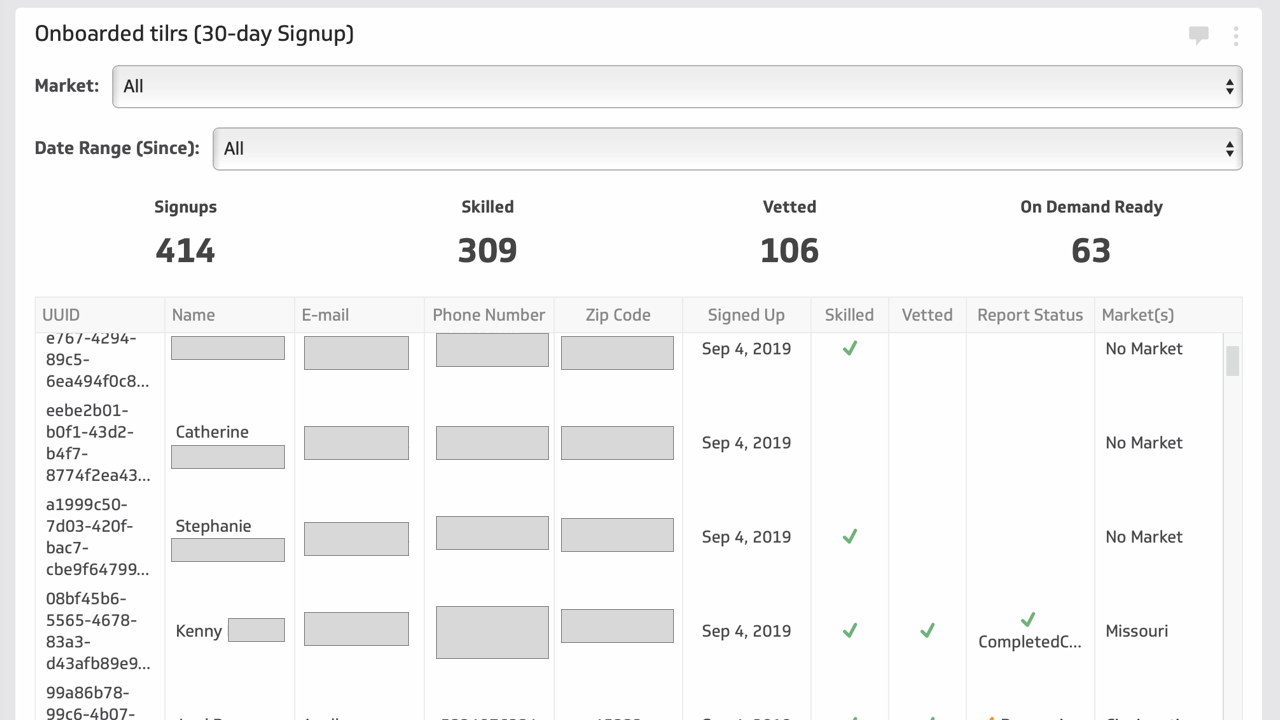
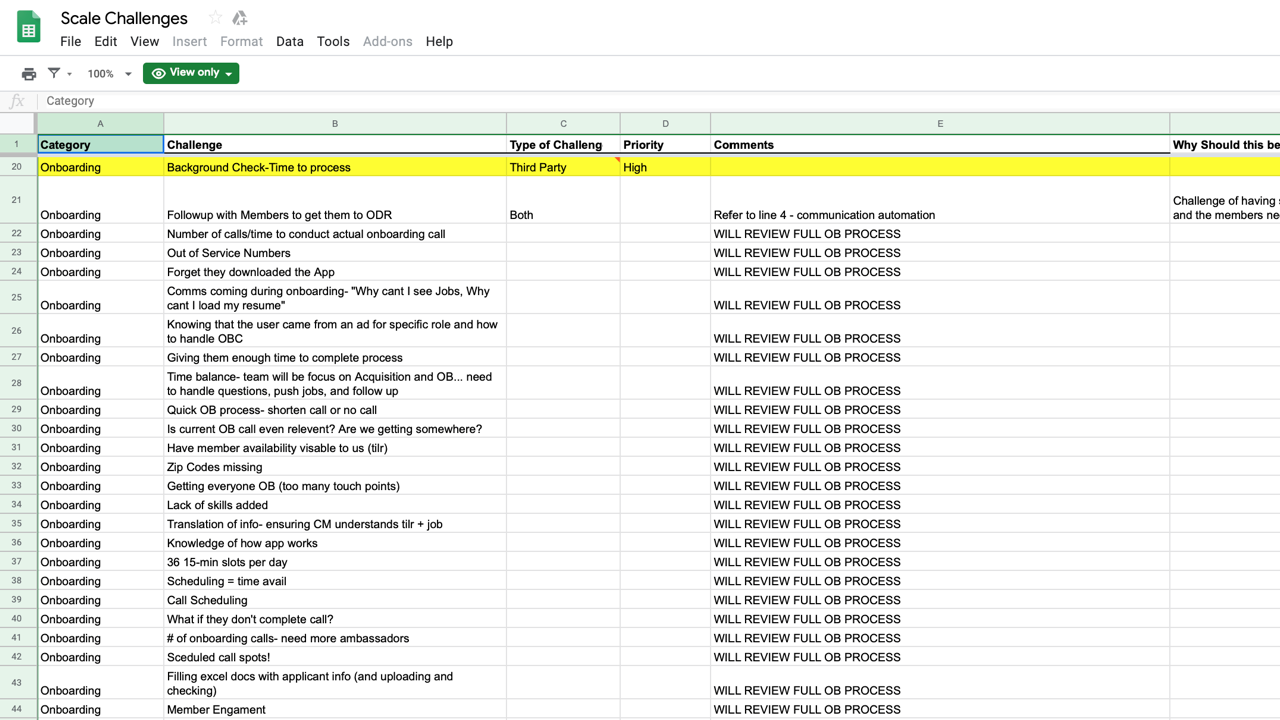
Where are new sign ups falling off? What are the shortcomings of the current process?
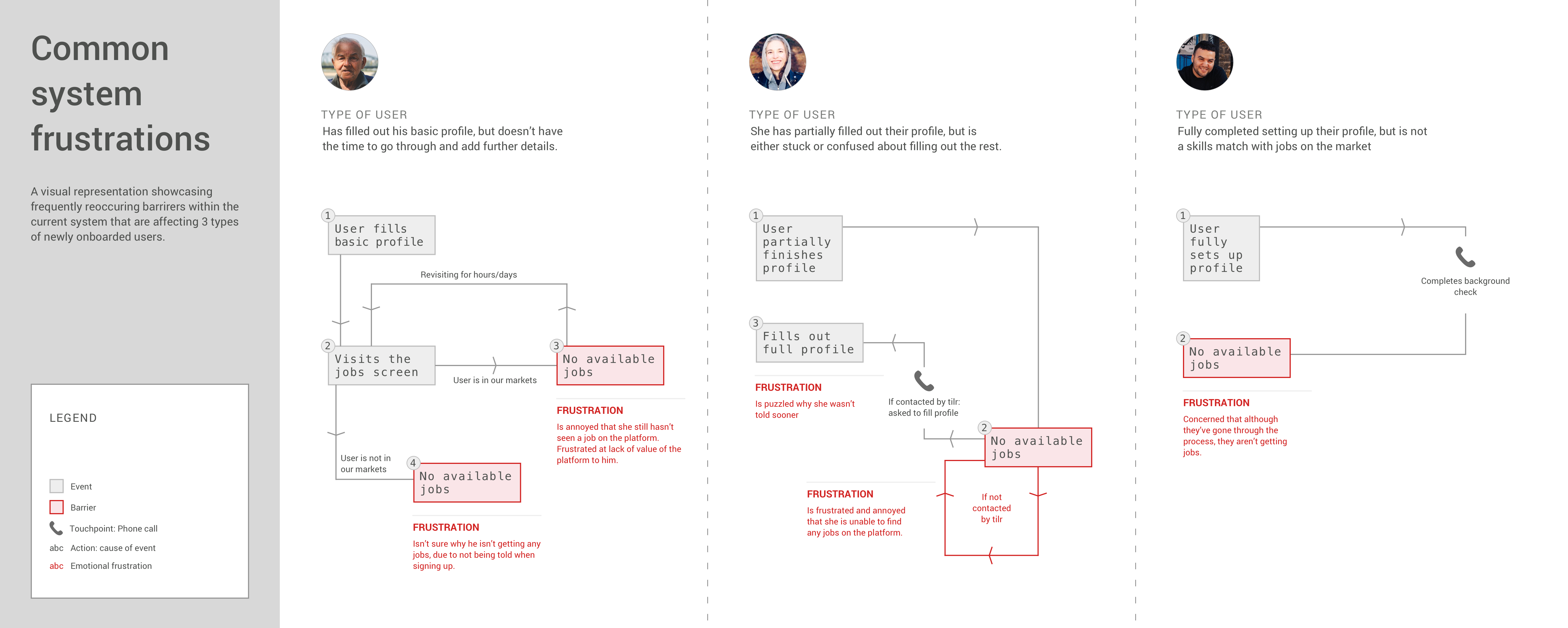
Examples of frequent user frustrations through our onboarding process — emphasis on the phone call constantly used throughout the system to get users back on track.
Defining the Problem
After conducting our research, we went through the main pain points and reframed our design lens by asking ourselves this question:
How might we enable new users to see value and efficiently move them down the pipeline, stress-free?
Product Goals
- Efficiency — save time for users by establishing a streamlined onboarding system.
- Scalablity — reduce the human 'cost' by capturing more information through the app.
- Optimization — reduce the physical time required to become a worker on the tilr platform.
Long Term Goals
- Increase show rate — by making it easier for users to work jobs, they can feel more confident in the app and use it (more) to empower themselves.
- Garner trust — having (more) users that that are throughly onboarded and working, employers will have more trust in the tilr platform as a hiring solution.
- Further Scalability — reduce more unecessary human touchpoints and simplify the process so users can easily sign-up, completely through a automated process.
Ideation
With those things in mind, we began by collecting research about common modern onboarding processes, creating a process map, and creating basic greyscale wireframes (later moving on to prototyping).
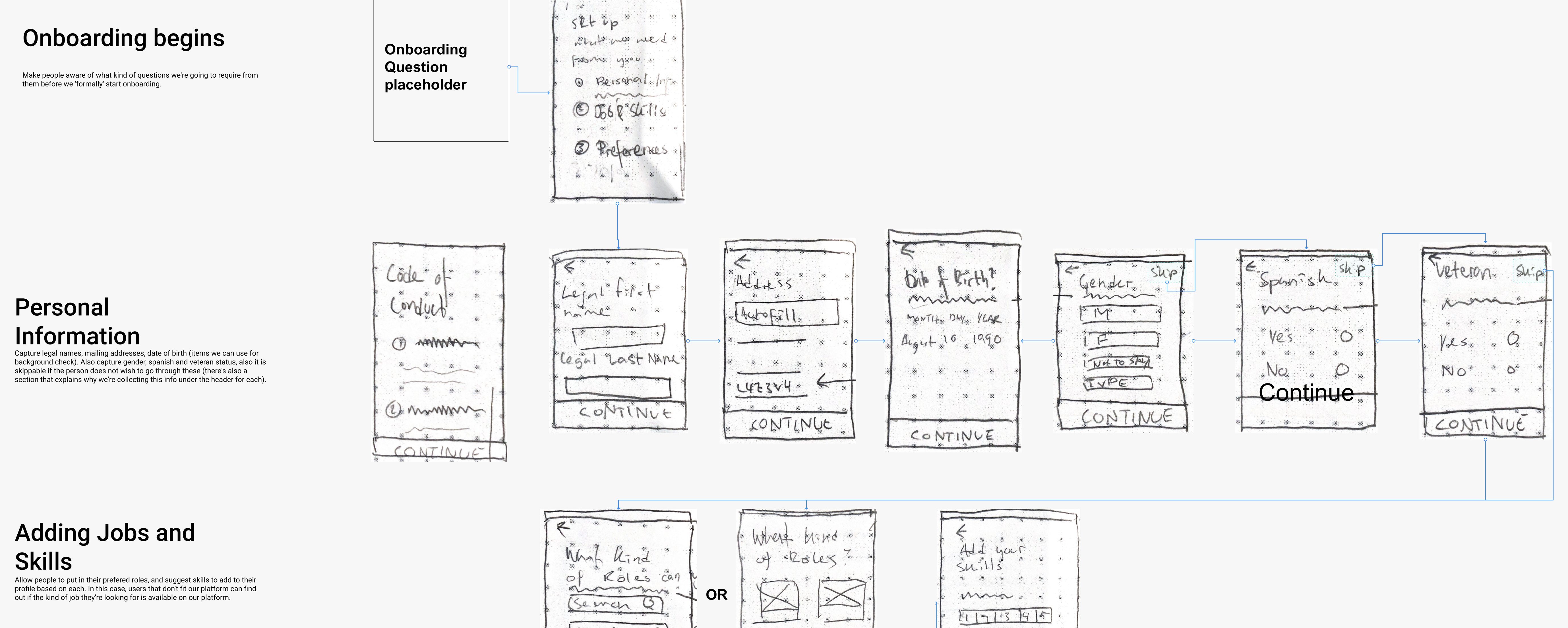
This is just a snippet! View the full process map here.
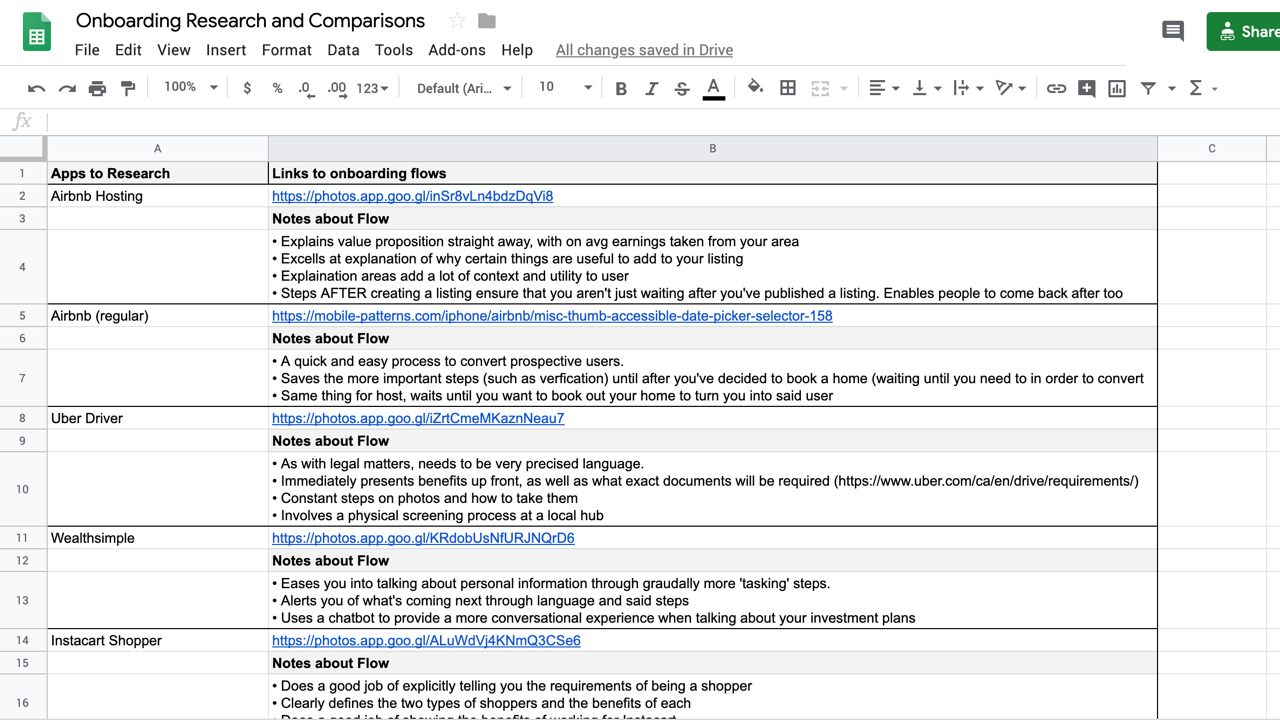
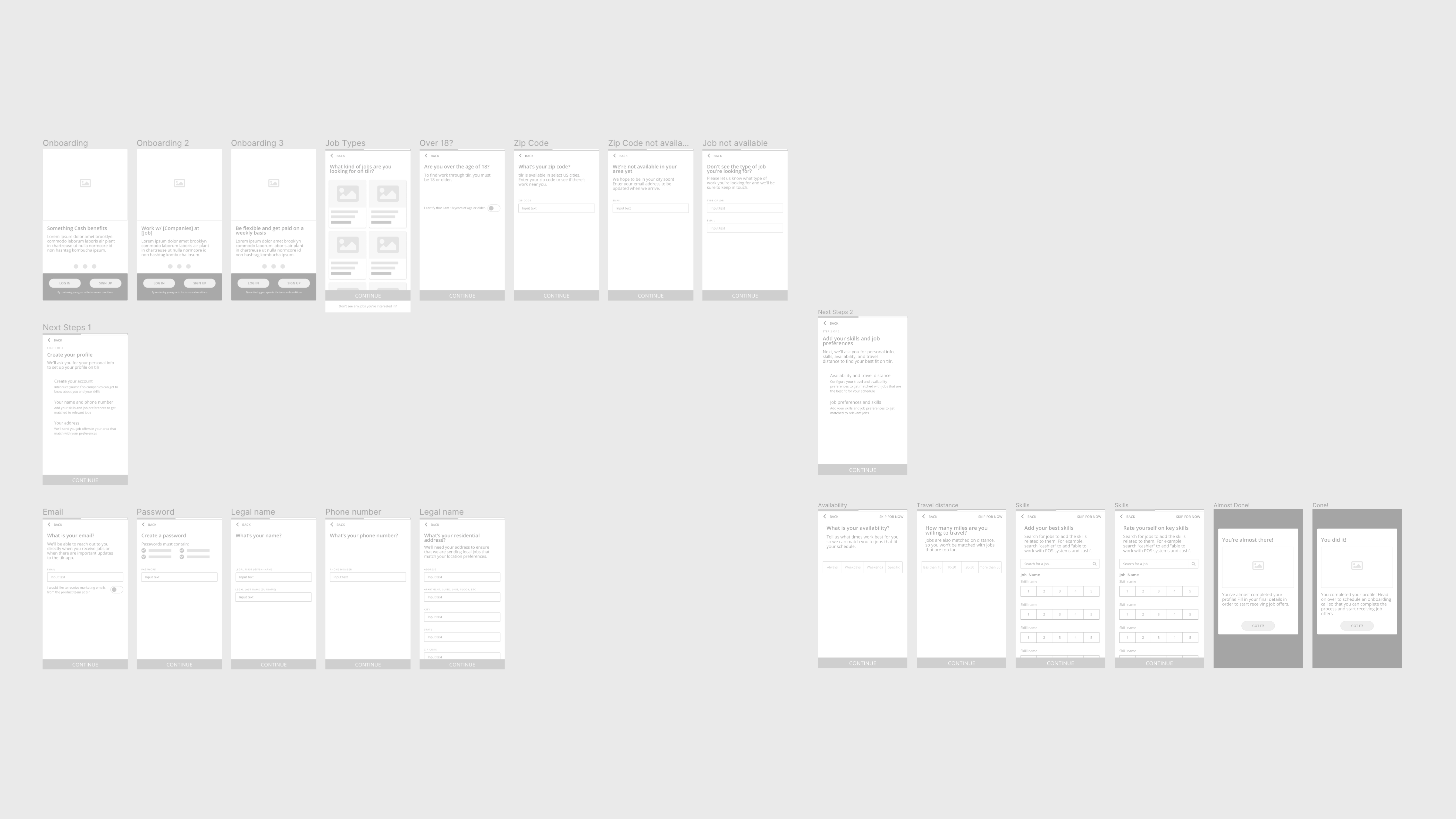
Prototyping
Designed for modularity and scalablity, the onboarding process has a lot of interchangable moving parts. Precisely because of that, I had the opportunity to gather a lot of feedbck on how it should be structured through prototyping. By being able to iterate quickly and get constructive feedback with each iteration, I was able to better understand our path to the best solution.
First (1/5) Prototype
Although a solid first iteration, this prototype iteration was not enough to visualize the final flow. It was missing:
Third (3/5) Prototype
This third iteration was getting closer. From here it was easy to see how this would play out in the final application. Some small things, however still still detected from testing this prototype:
Fifth (5/5) Prototype
Right before going into hi-fidelity mockups, this last iteration was aimed at getting everyone on the same page as for what is going to be in the new onboarding flow. The new things included in this prototype are:
Final Outcome
The reoccuring obstacles that newly signed users face, from being unable to build a proper profile, to not being matched with jobs — this new onboarding flow aims to fix by efficiently guiding users into creating a viable profile, improving scalability by reducing unecessary touchpoints, and optimizing their time by making it quicker to join tilr as a worker.
Reflection
Respecting the time of our users.
Whenever you have access to them, it's extremely important to rely on statistics and data in order to drive your design decisions. Because of our analysis of new users coming in, we were able to see a large problem area and address it accordingly. Prioritizing user needs and assessing if it's still being met constantly through data is extremely pertinent to success of your platform. Being able to leverage data-driven design was extremely helpful and re-established how much I still want to keep growing as a designer.